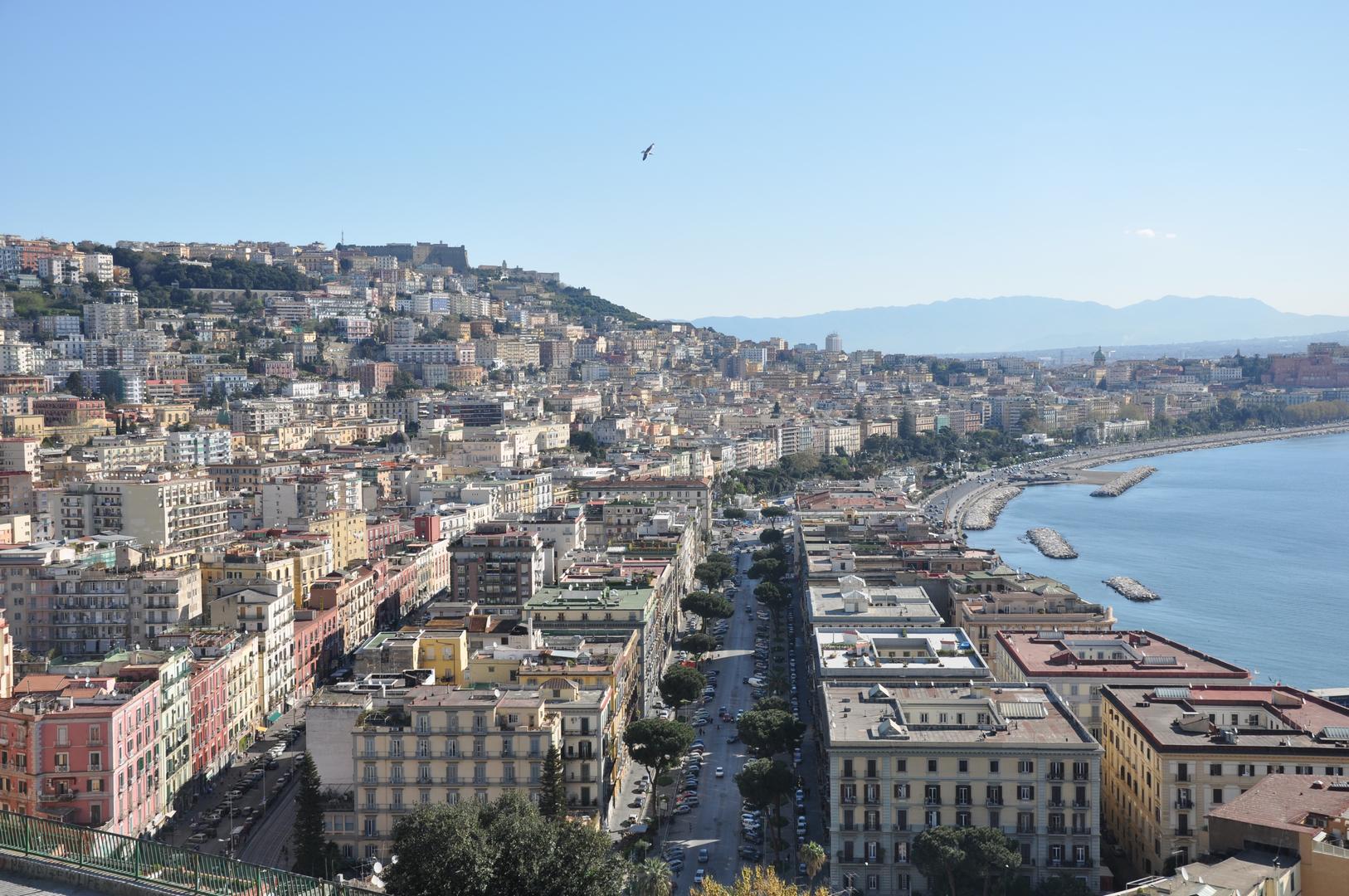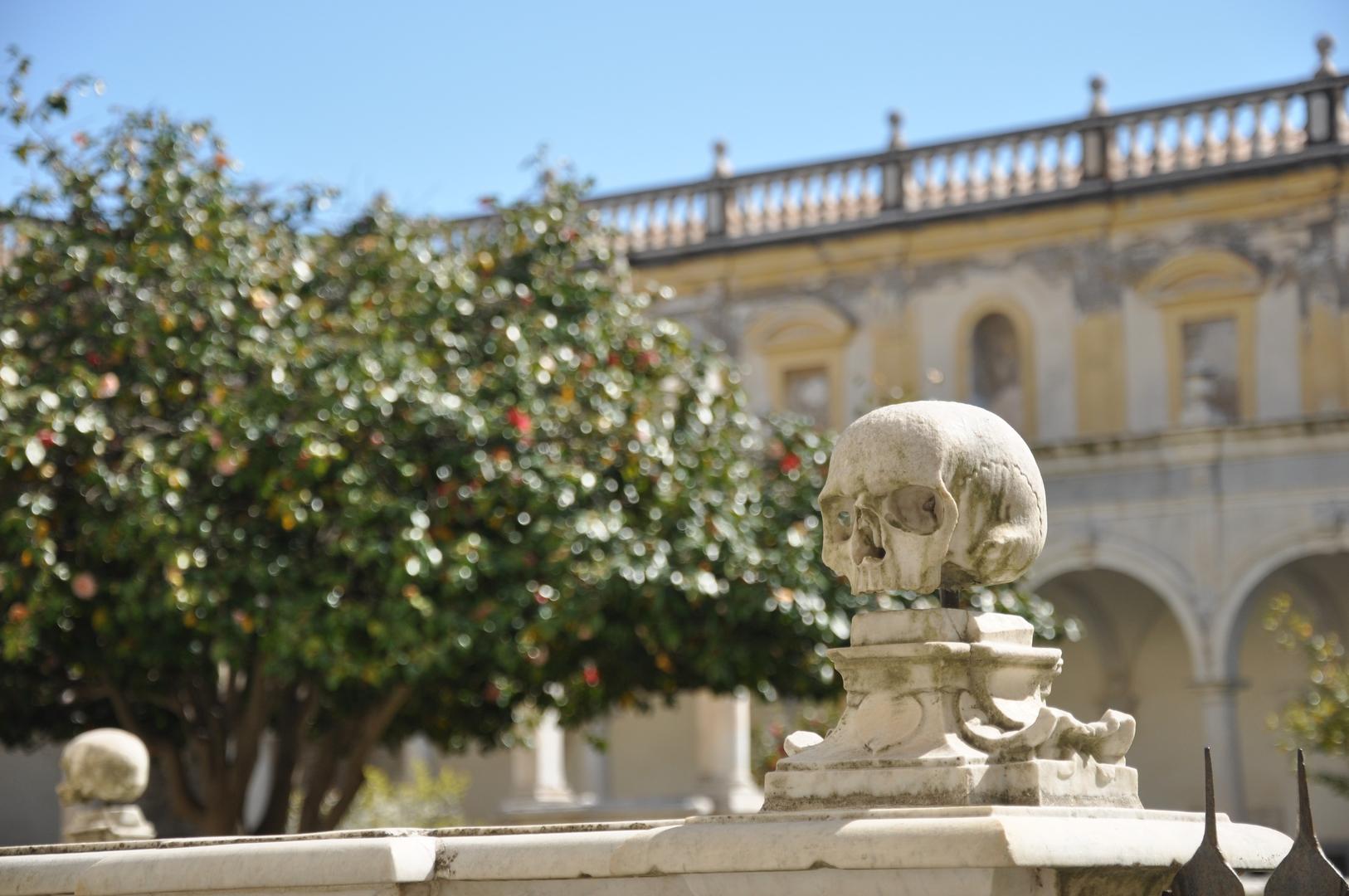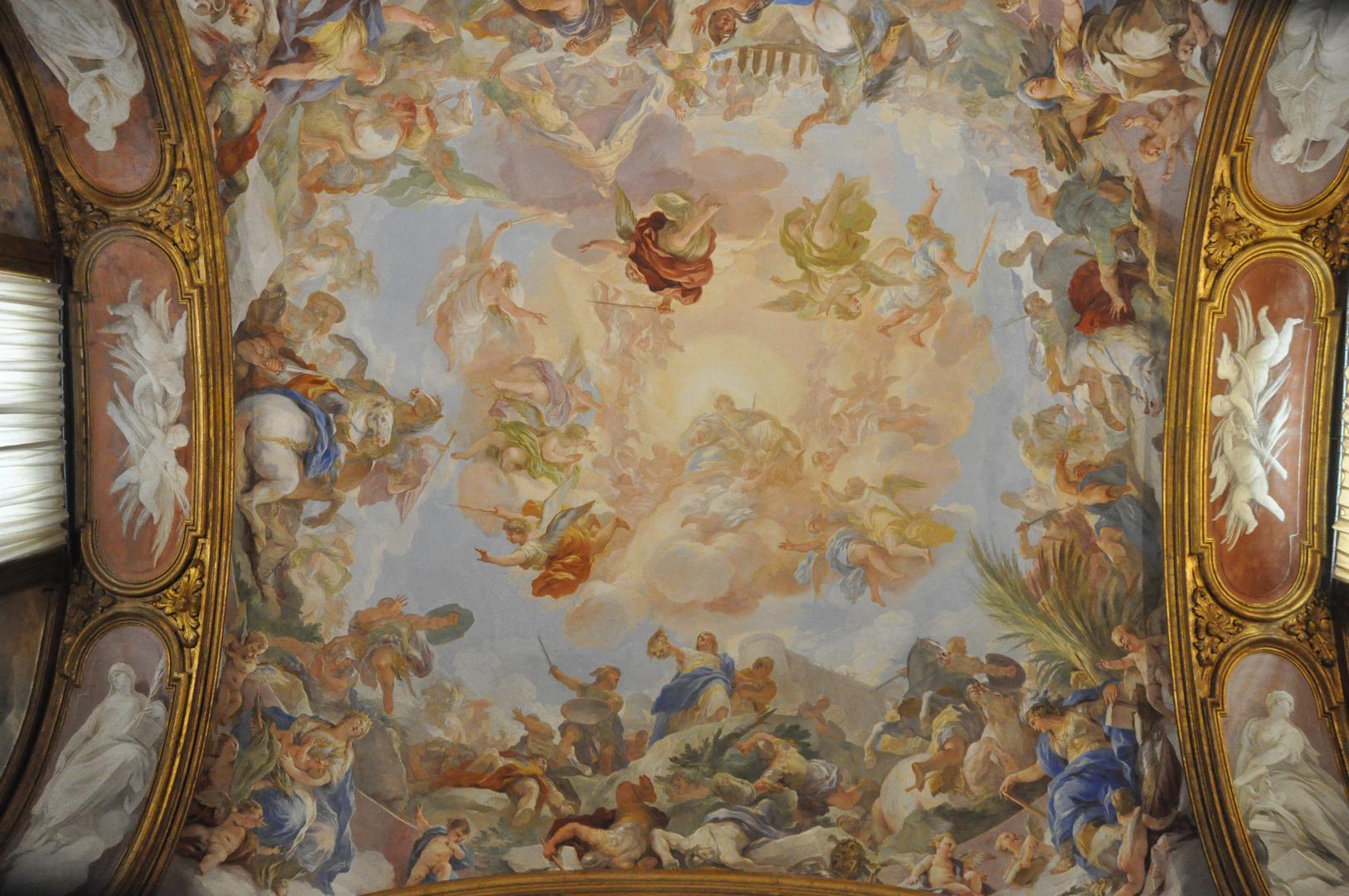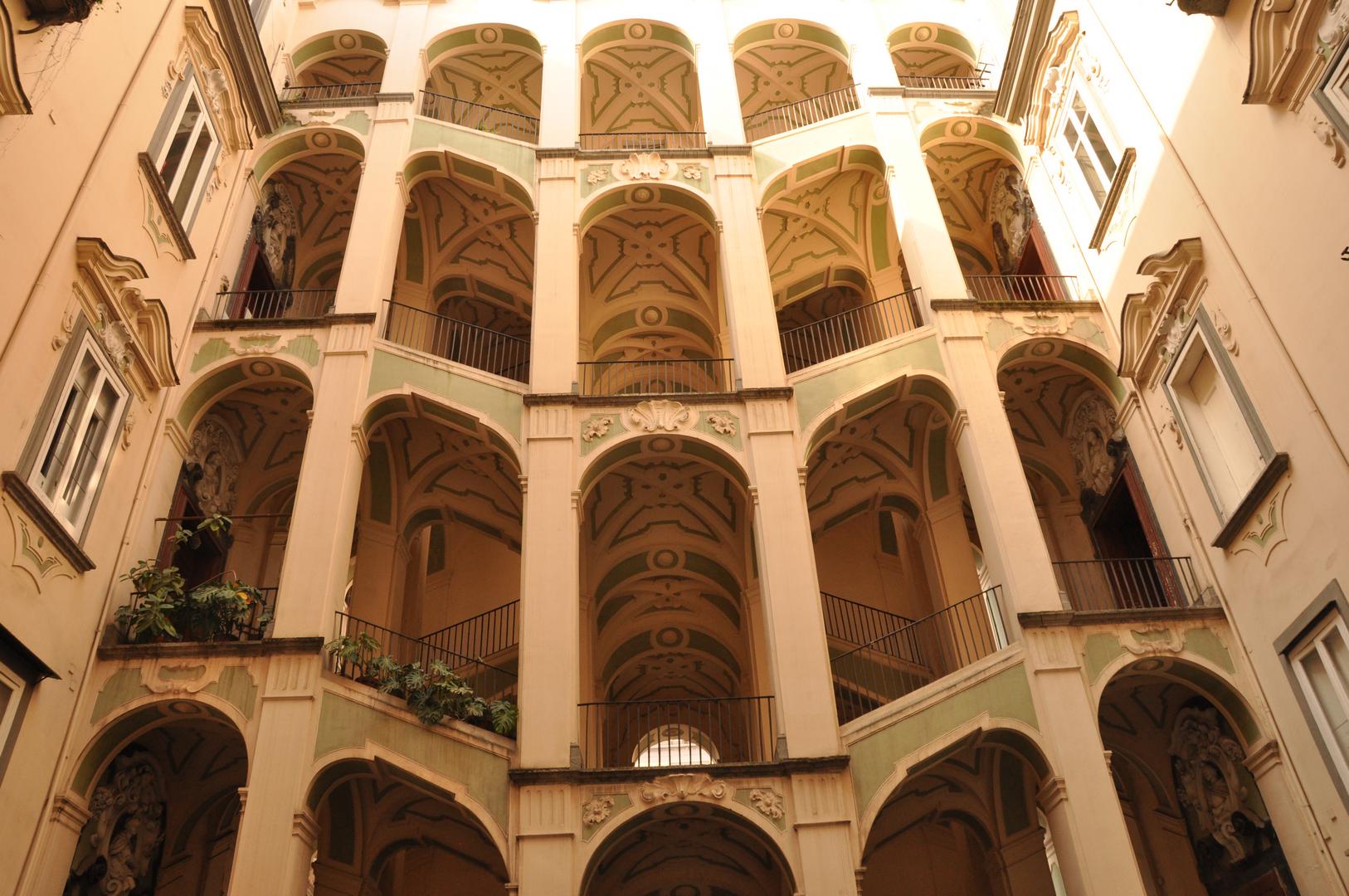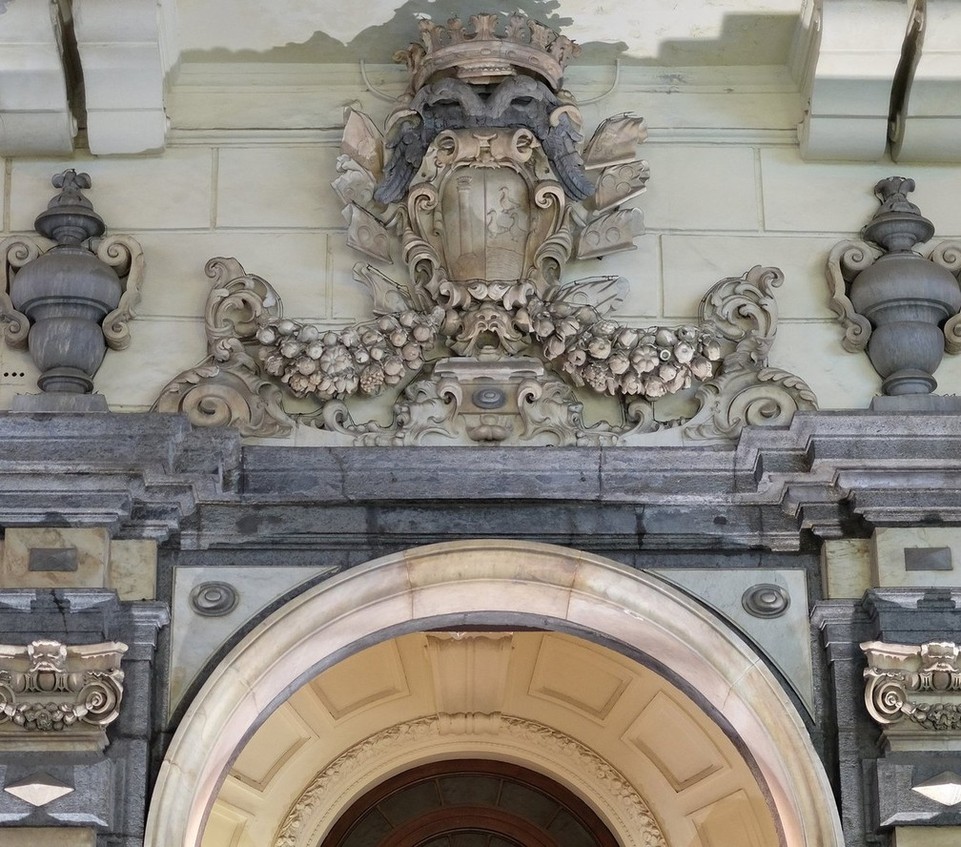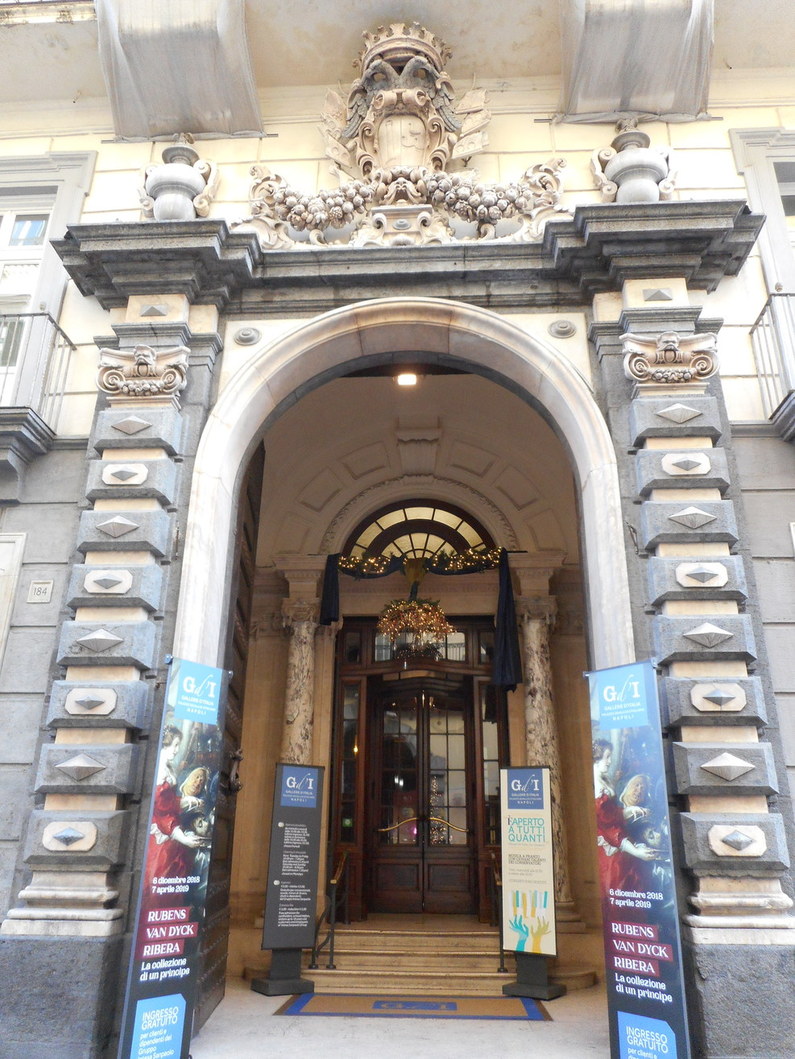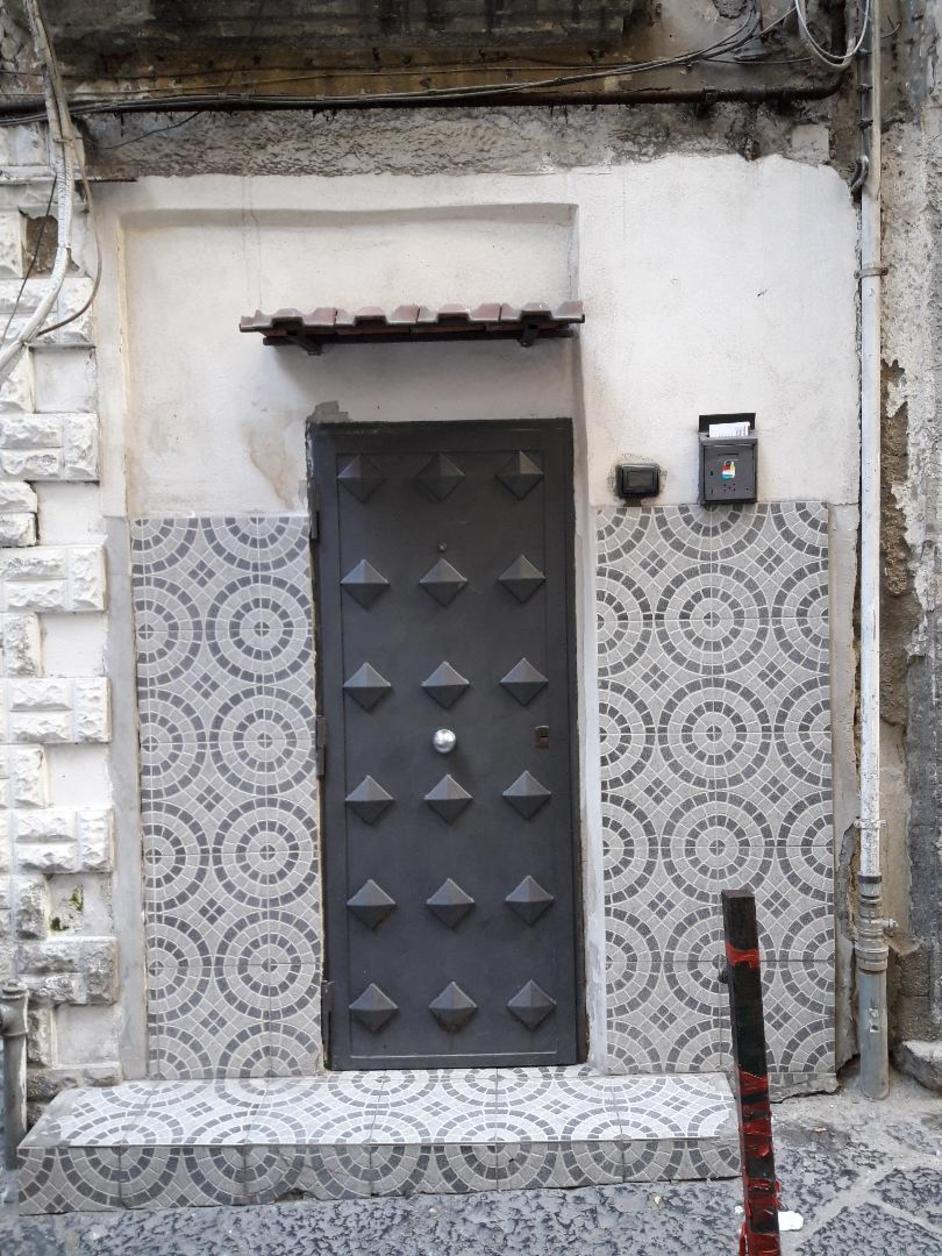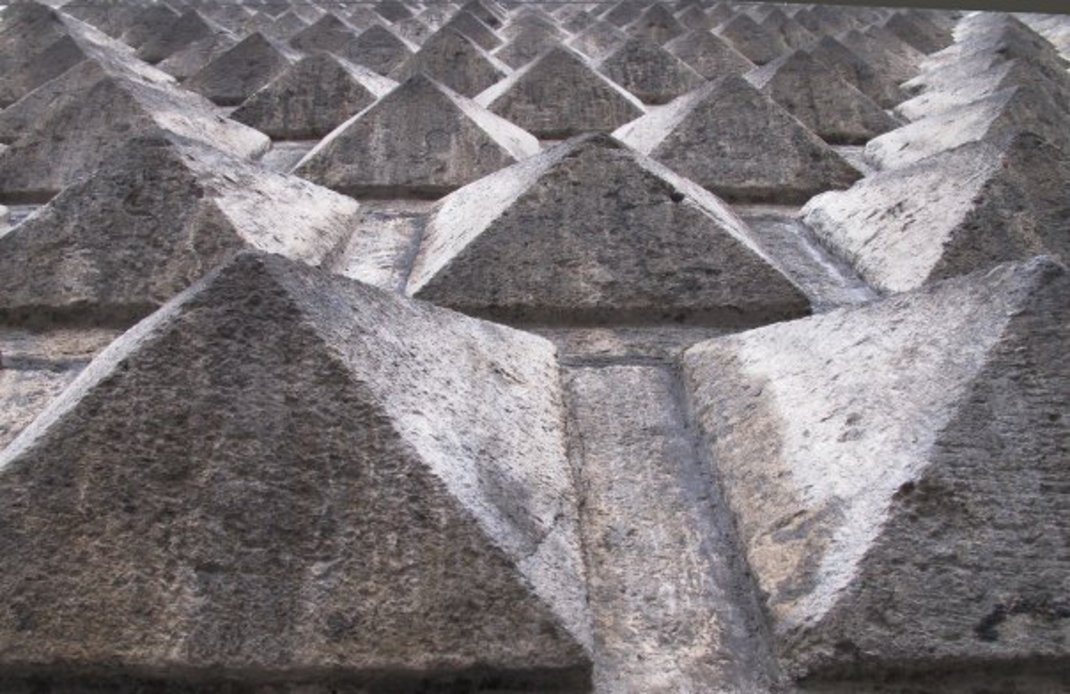Fiorella: Sometimes I walk in the same streets where I have been so many times and I still appreciate the fabulous details. All the staircases, balconies, walls or portals that you can only find here. Other times I am horrified by illegal remodels or additions.
Alice: Any street that you walk on holds so many surprises. I really love the Neapolitan portals. When I came here many years ago I would get lost looking at the details of seemingly hidden places that had so many stories to tell. There are innumerable incredible doorways in Naples that it is very hard to choose which ones I love most. Let’s try to pick two or three of them.
In a shabby but charming corner of our fabulous Naples Antonio Penne, the secretary of King Ladislao di Durazzo built his palazzo in 1406. Some ashlars of the façade are sculpted with the French lily, symbol of the Royal family, some others show feathers. Penna in Italian means plume, feather so the symbol refers to the name of the family and the role of Antonio Penna as the King’s Secretary. The façade is a mix of central Italian and Catalan style with its depressed arch.
Among the centuries the building was owned by different noblemen, an ecclesiastic order and a volcanologist. More recently it has been purchased by the Regione Campania.
What make this building (who desperetly needs restoration) fabulous is the sober, geometric façade. It shows some unexpected symbols and the inscription above the portal carved in what looks like a marble ribbon is especially of note. It is an epigramm by the poet Marziale «QUI DUCIS VULTUS NEC ASPICIS ISTA LIBENTER OMNIBUS INVIDEAS IN-VIDE NEMO TIBI» You who grimace, you poisonous who does not read gladly these verses. May you be jealous of everyone and may no one be of you. Antonio Penna uses Marziale’s verse to tell passers-by that he knows his beautiful home can generate envy, but envious people are stupid fools to be ignored…
For an unknown reason some unique Neapolitans put ceramic tiles with a similar meaning outside their bassi (street level homes) or shops and, in addition, a horn of good luck. However, facade of their buildings are not so classy though the sentiment still prevails that others can still envy their status. Not so fabulous, but…
Alice: Speaking of fabulous, I would definetly mention the doorway of Palazzo Zevallos.
Fiorella: I am with you darling… In via Toledo at n.185 stands the impressive façade of the 17th c. Palazzo Zevallos Stigliano, commissioned by the Spanish merchant Giovanni Zevallos to Bartolomeo Picchiatti.
Alice: His son Francesco Antonio was an archaeologist, antiquarian and architect and had renovated the church of the Pio Monte della Misericordia. They had good genes!
Fiorella: This is a Palazzo where I always go to admire the very interesting collection of paintings and sculptures, with some emblematic 19th c. examples and of course the indisputed star of the museum, the Martyrdom of Saint Ursula which is known to be the last work by Caravaggio. The palazzo itself is a work of art, but let’s focus only to the portal that impresses all the passers-by.
Zevallos commissioned the building and when he died from the horrendus plague in 1656 his heirs sold it to his financier agent Jan Vandeneynden. Vandeneynden was a merchant and an art dealer. He was close to Flemish artists and restless collectors such as Gaspare Roomer. Thus Palazzo Zevallos housed amazing artworks for two generations of the Vandeneynden family. One of Jan V.’s granddaughters married a Colonna prince of Stigliano thus continuing the amazing role of the residence as a house museum under the Colonna di Stigliano.
The fabulous doorway shows the coat of arms of the Colonna di Stigliano family which had displayed in the residence works by Luca Giordano, Titian, Anton Van Dyck, Poussin and many others and hosted musicians such as Farinelli, Scarlatti and Pergolesi. In the 1830ies one of the Colonna sold the 1st floor to the banker Carlo Forquet who redecorated it with the stuccoes and frescoes that we can still appreciate. By the 1920ies the Banca Commerciale had bought the whole building and run a quite theatrical Art Nouveau renovation of the courtyards and the internal loggias. In 2007 the Palazzo became a museum housing a permanent art collection well displayed in this fabulous architectural framework.
The majestic portal opens these wonders and memories to visitors. It is impressive with its geometric and at the same time eccentric pillars in marble and piperno. They are decorated with diamond-shaped elements and end with two vases. A rich garland and curls in white marble support the crowned coat of arms.
There are many other portals which deserve to be mentioned, but in talking about geometry, ashlars and diamond-shaped elements we cannot forget a walk we did in the side streets of Quartiere Sanità. Here we noticed many bizarre balconies and doorways.
One of them-not the craziest-perhaps has the ambition of recalling the façade of Gesù church or the pillars on the sides of Palazzo Zevallos’ portal. Who knows…these are only some of the mysteries of our fabulous city
pillar of Palazzo Zevallos’ portal
detail of the façade of the Church of Gesù.
Picture by Raffaele Lello Mastroianni
